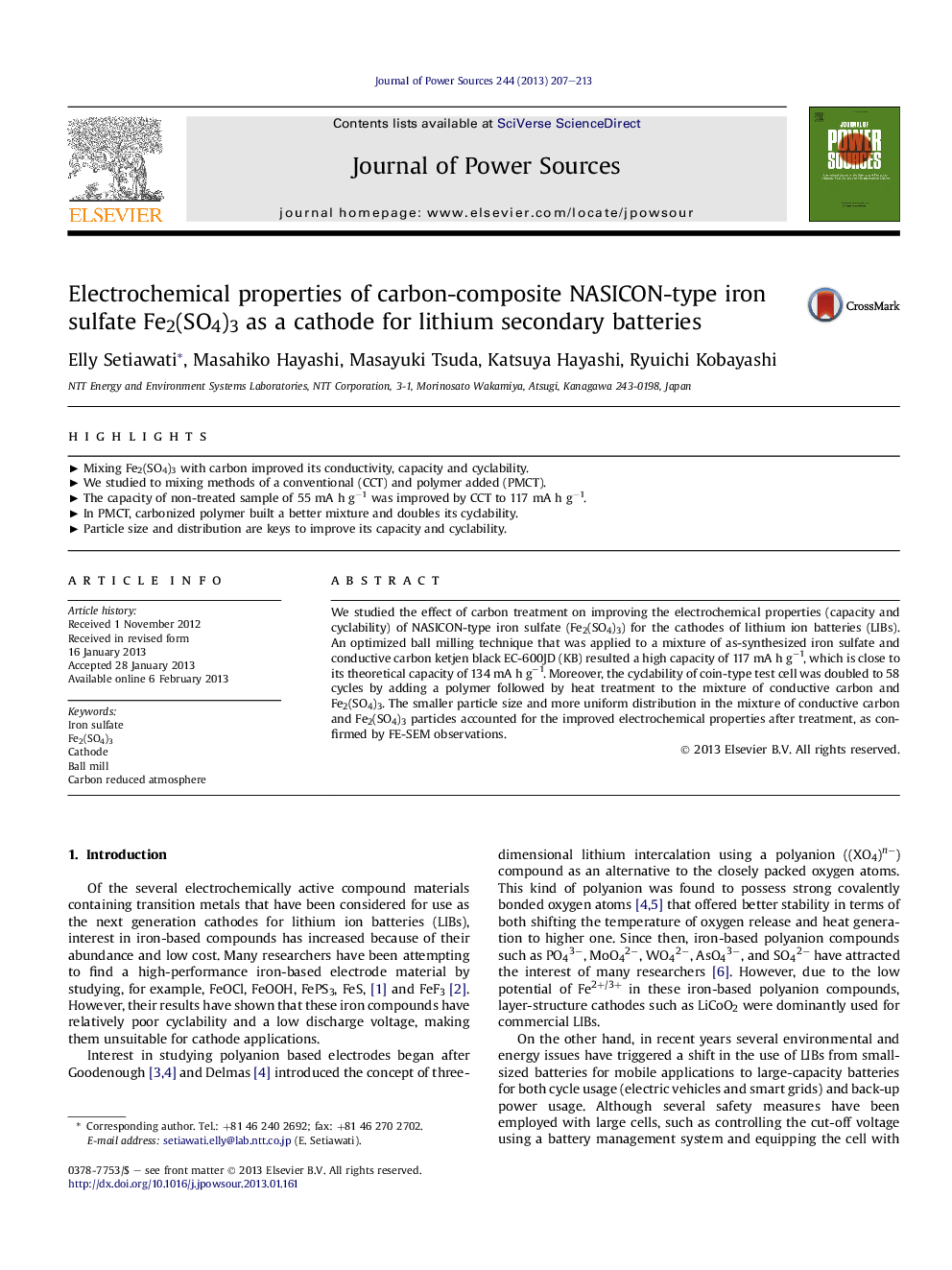| Article ID | Journal | Published Year | Pages | File Type |
|---|---|---|---|---|
| 1287464 | Journal of Power Sources | 2013 | 7 Pages |
We studied the effect of carbon treatment on improving the electrochemical properties (capacity and cyclability) of NASICON-type iron sulfate (Fe2(SO4)3) for the cathodes of lithium ion batteries (LIBs). An optimized ball milling technique that was applied to a mixture of as-synthesized iron sulfate and conductive carbon ketjen black EC-600JD (KB) resulted a high capacity of 117 mA h g−1, which is close to its theoretical capacity of 134 mA h g−1. Moreover, the cyclability of coin-type test cell was doubled to 58 cycles by adding a polymer followed by heat treatment to the mixture of conductive carbon and Fe2(SO4)3. The smaller particle size and more uniform distribution in the mixture of conductive carbon and Fe2(SO4)3 particles accounted for the improved electrochemical properties after treatment, as confirmed by FE-SEM observations.
► Mixing Fe2(SO4)3 with carbon improved its conductivity, capacity and cyclability. ► We studied to mixing methods of a conventional (CCT) and polymer added (PMCT). ► The capacity of non-treated sample of 55 mA h g−1 was improved by CCT to 117 mA h g−1. ► In PMCT, carbonized polymer built a better mixture and doubles its cyclability. ► Particle size and distribution are keys to improve its capacity and cyclability.
